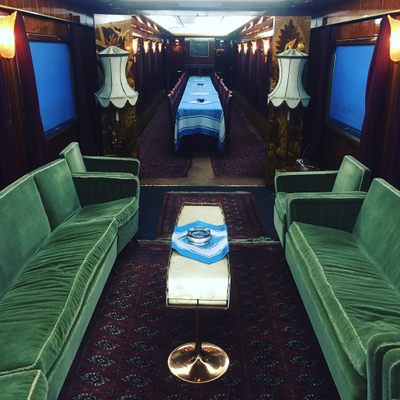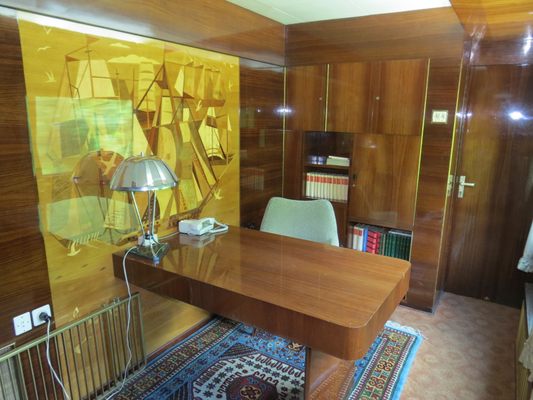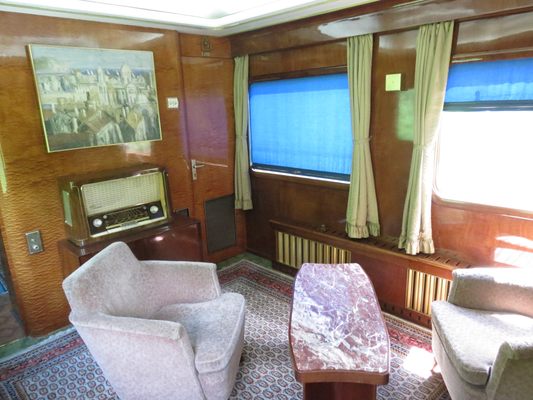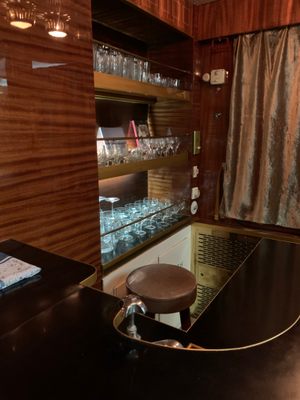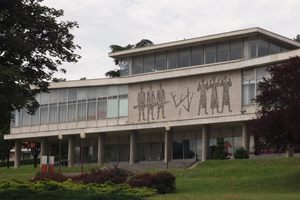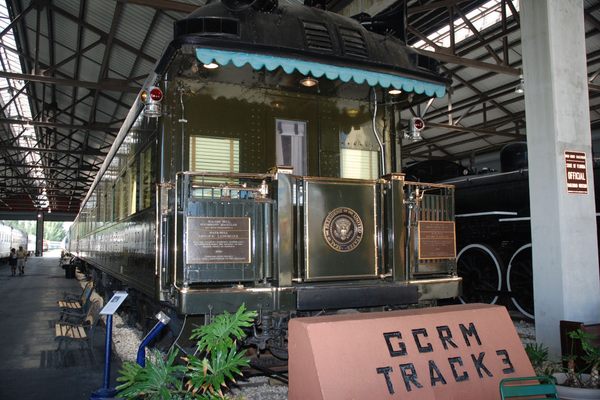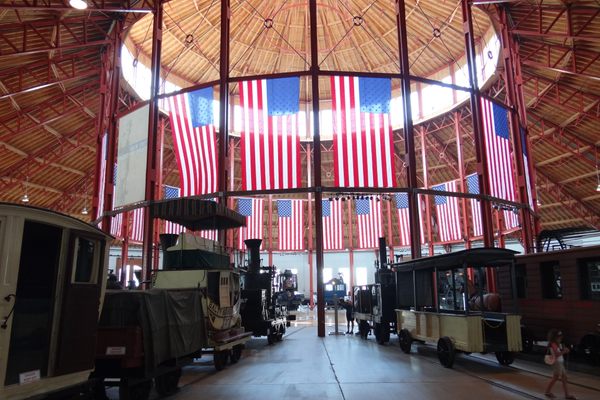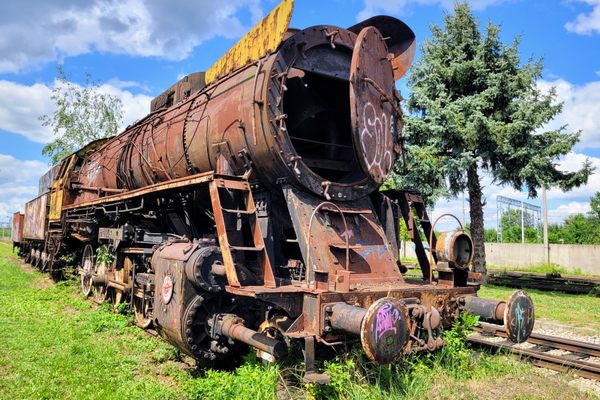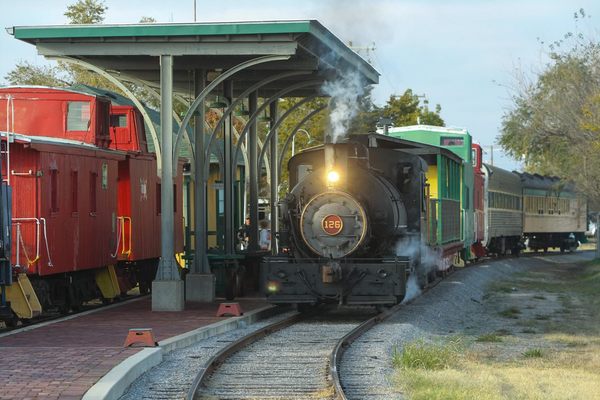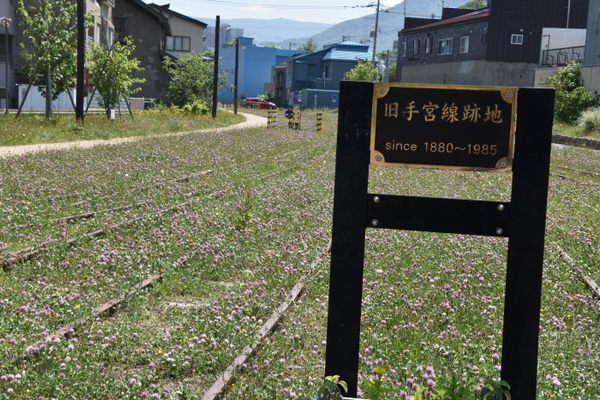About
In an unassuming railway depot south of Belgrade lies a relic of a forgotten era. Built in a time when Yugoslavia was recovering from the Second World War, this iconic blue train served to transport the country's leaders around the different republics of Yugoslavia, and entertain foreign dignitaries so critical to the diplomatic success of the socialist nation.
The Blue Train, Marshal Josip Tito's private train, was built with luxury in mind. Tito preferred to travel by rail, and as Yugoslavia became more prosperous in the years after the war, the train reflected the optimism and wealth of its primary user, if not that of the average citizen.
Custom-built coaches were decorated in a simple yet modern socialist realist style, with certain classical holdovers such as intricate mosaics and dark hardwood lining. The overall effect is one of understated power, which comes as no surprise considering some of the train's clientele.
Used often by Tito for domestic purposes, the Blue Train also served an important diplomatic role. Its guest list is a veritable who's-who of 1960s power players, from Queen Elizabeth to Charles de Gaulle to Yasser Arafat. It's easy to imagine diplomats and party officials seated around the massive main dining table or crammed into the modernist, Zodiac-themed bar, as Tito sought to provide the world a path between the American-led West and the Soviet sphere of influence.
It's still possible to enjoy the splendor of the Blue Train, which has been remarkably preserved in its original state. If your pocketbook is big enough, you can do so as Tito did: for a hefty fee, the Serbian Railways will hook up the train for a trip on the spectacular Belgrade-Bar railway. The line is one of Tito's biggest public works projects and one of the most scenic rail journeys in Europe; the 296-mile route between the Serbian capital and the Montenegro coast passes over 435 bridges and through 54 tunnels.
For those whose wallets aren't quite as fat, it's still possible to enjoy the Blue Train, and walk through the very same cars where Haile Selassie sat, Queen Elizabeth dined, and Josip Broz Tito slept.
Related Tags
Know Before You Go
To visit the train, you'll need to purchase a ticket, which can be a small adventure in itself. The historical railway station where they were once sold has now been closed, but try the Beograd Centar station VIP or Information desks. Try to find a clerk that speaks English, and explain you want to see the "Blue Train." Failing this, the words in Serbian are "Plavi Voz."
It helps to email ahead using the address on the Serbian Railways' website under "Special Services." And, if all else fails, the folks at the Serbian Railway Museum in downtown Belgrade, some of whom speak excellent English, are very helpful in arranging a visit. Once you have a ticket, just hop on the #3 tram and ride all the way to the Rasadnik stop—the depot is just across the railway tracks.
Be cautious when crossing these and entering the depot--in addition to frequent train traffic the depot is actively used as a railway maintenance facility and there is frequent movement of heavy equipment. Show your ticket to the guard just past the main depot doors, and if they are open and there are some available workers, they'll open the train.
Balkans Road Trip: Serbia, Croatia & Bosnia and Herzegovina
Traverse the beauty and history of the Balkans through locals' stories.
Book NowPublished
July 13, 2018

